Marine Private Eugene Sledge watched in stunned horror. Two Japanese soldiers with samurai swords had attacked his unit’s position on Okinawa in June 1945 but had been killed before they could cause harm. A fellow Marine with a dazed look on his face approached one of the corpses and repeatedly plunged his rifle into the dead man’s head.
“I winced each time it came down with a sickening sound into the gory mass,” Sledge later wrote in his memoir of the war. “Brains and blood were splattered all over the Marine’s rifle, boondockers, and canvas leggings.”
Comrades of the shell-shocked Marine took his arms and led him away to an aid station.
Okinawa was that kind of battle. The island was to be a preview for the invasion of Japan, only 350 miles away. The Americans wanted to seize the main airfield on Okinawa to launch bombers against enemy industrial sites; the Japanese were prepared to fight to the last man to prevent the capture of their home soil.
The Marines and Army endured gruesome casualties—physically and psychologically—as they slugged it out with an enemy bent on a suicidal defense of the small island. The United States suffered death on a staggering scale: 7,500 Marines and soldiers and another 5,000 sailors. Japan sacrificed even more men: at least 110,000 soldiers, many after the battle was lost. An estimated 100,000 civilians also perished, either caught in the crossfire between the two armies or through forced mass suicide.
It was an extremely costly engagement, too, for the U.S. Navy, which lost 36 warships and had another 368 damaged, including the aircraft carrier USS Bunker Hill, which was struck by two kamikaze—suicide plane—attacks.
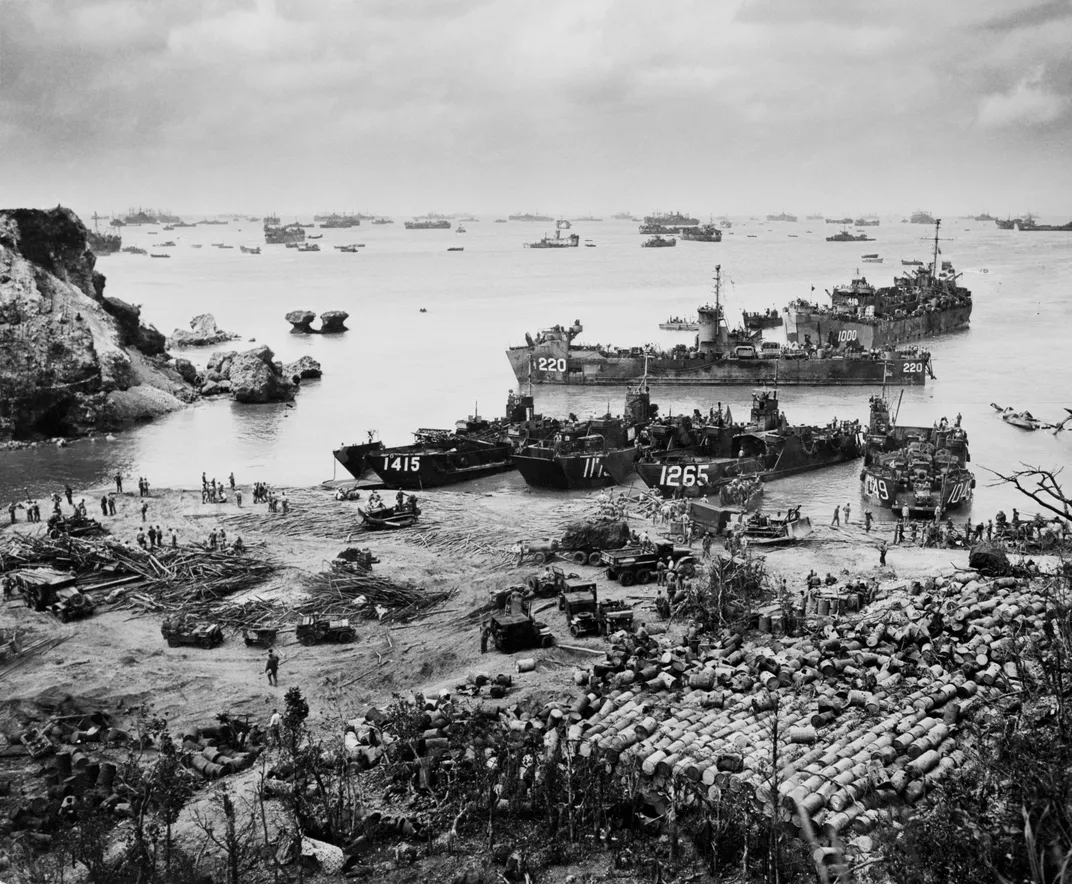
For President Harry S. Truman, what came next was a fateful decision. He learned about the Manhattan Project in April when he took office after the death of Franklin Delano Roosevelt. Before the Battle of Okinawa even ended, on June 22, 1945, Truman had come to the conclusion that he had no choice but to drop the atomic bomb in order to avoid “an Okinawa from one end of Japan to the other.”
Two new books examine the carnage of this conflict 75 years ago and its influence on the decision to use that frightening new weapon. Both Joseph Wheelan’s Bloody Okinawa: The Last Great Battle of World War II and Saul David’s Crucible of Hell: The Heroism and Tragedy of Okinawa, 1945 recount the human cost of ending a war that was still a long way from over.
Bloody Okinawa: The Last Great Battle of World War II
A stirring narrative of World War II's final major battle--the Pacific war's largest, bloodiest, most savagely fought campaign--the last of its kind.
Crucible of Hell: The Heroism and Tragedy of Okinawa, 1945
From the award-winning historian, Saul David, the riveting narrative of the heroic US troops, bonded by the brotherhood and sacrifice of war, who overcame enormous casualties to pull off the toughest invasion of WWII's Pacific Theater -- and the Japanese forces who fought with tragic desperation to stop them.
“Okinawa and Iwo Jima before then had rattled the President and joint chiefs of staff,” Wheelan says in an interview. “They could see how costly it would be to invade the mainland. Truman knew [they] would lose planes and ships and men—and all the Japanese. The enemy leaders had said they would all die fighting. The island would just be a charred cinder. That did push the decision.”
**********
Operation Iceberg began April 1, 1945, with the largest amphibious operation of the Pacific Theater. The American strategy was to secure Okinawa and then launch B-29 Superfortress attacks from what would become Kadena Air Field in preparation for the final assault of Japan. The closeness of the island—less than 1,000 miles from Tokyo—meant the bombers could be provided with crucial fighter protection going in and coming back from their missions.
More than 184,000 American soldiers and marines landed on the beaches of Okinawa. They expected to be repulsed by the Japanese as they waded ashore, but instead were met with little resistance. It wasn’t until the troops began to push inland that they finally felt the full fury of the enemy defense.
By this stage of the war, many in the Japanese military high command believed their cause was lost. The best they could hope for was to make each battle as costly as possible so the Americans would lose their taste for combat and offer favorable terms for surrender. By the time the Battle of Peleliu started in September 1944, the Japanese had abandoned banzai attacks—all-out suicidal assaults by infantry—and offensive operations in favor of a defensive strategy of deadly ambushes and a system of concrete pillboxes with machine guns that supported each other to fend off attacks and flanking maneuvers.
“The Japanese came up with an attritional defense,” Wheelan says. “They would station themselves inside hills and rock formations and let the enemy come to them. They decided they would fight to the death on all these islands, and their purpose was to inflict as many casualties as possible on the Americans.”
As a result, the fight to take Okinawa became a deadly struggle. Bloody clashes at Kakazu Ridge, Sugar Loaf Hill, Horse Shoe Ridge, Half Moon Hill, Hacksaw Ridge and Shuri Castle would come to symbolize the cost of securing the island. The battle would also see two U.S. Army generals—Simon Bolivar Buckner Jr. and Claudius Miller Easley—killed in combat. Buckner, a lieutenant general, was the highest-ranking American to die by enemy fire in the war.
/https://tf-cmsv2-smithsonianmag-media.s3.amazonaws.com/filer/9f/4d/9f4d4088-6016-4c6d-b35f-09c95731ca07/gettyimages-51916170.jpg)
In addition to the dead, the Americans suffered some 36,000 wounded. Bodies were disfigured by thundering artillery bombardments and the scythe-like enfilade fire from machine guns. Many, including Private Sledge, would feel the devastating psychological aftereffects of intense hand-to-hand combat for decades to come. Some would never forget the smell of burnt bodies from flamethrowers used to kill Japanese soldiers who had holed up in caves and refused to surrender.
As casualty figures mounted, Truman became increasingly concerned that Operation Downfall—the invasion of Japan—would be extremely costly. More than 3 million men were being assembled for that assault, which was planned for November 1945. American military leaders conservatively estimated casualties to take the home island at 1 million.
On June 18, before Okinawa was officially declared secure, President Truman met with senior military advisors for an assessment of the battle. The price had been high. Where earlier conflicts had seen an American-to-Japanese casualty rate of 1:5, Okinawa was closer to 1:2. The Japanese defensive strategy had been successful.
In addition to American casualties, the president was concerned about Japanese losses. Civilians were being trained to fight to the death with pitchforks and pikes or commit suicide rather than submit to occupiers. As Wheelan writes in his book, “Japanese propagandists in lurid strokes had portrayed Americans as brutish killers who delighted in murdering, torturing and raping captive soldiers and civilians … Some villagers detonated grenades; others killed themselves with razors, sickles, ropes and rocks.”
Truman queried his advisors for their thoughts about the impending invasion of Japan and cost of life. Finally, the discussion turned to the Manhattan Project. The development of the atomic bomb was nearing completion, though it had not been tested yet. Trinity—the codename for the first detonation of the weapon in New Mexico—was planned for mid-July.
The debate over using the bomb, and the virtue of the decision to do so, is the subject of heated historical review. For some historians, including David, Truman’s decision came easy. “All the key scientists are there, including [physicist J. Robert ]Oppenheimer,” he says. “They are all in agreement: if it works, the bomb has to be used. It is one clear way of ending the war and saving a lot of lives.”
“I don’t Truman had a decision to make. It was so clear and obvious,” says David.
Other experts believe Truman indeed had options. Kai Bird and Martin J. Sherwin, authors of the Pulitzer Prize-winning American Prometheus (a biography of Oppenheimer), have long argued that Japan would have surrendered without being bombed, particularly if faced with the entrance of the Soviet Union into the Pacific theater. Bird and Sherwin’s voices, along with various other signatories, became part of the nationwide debate in 1995 over a planned Smithsonian exhibit on the Enola Gay, the airplane that dropped the first atomic bomb on Hiroshima. (The exhibit also came under scrutiny by Word War II veterans who felt it was too sympathetic to Japan.)
After the war, Admiral William D. Leahy said he opposed using the atomic bomb—he called it “barbaric”—though there is no record of him speaking against it when the decision was made. Military historian Max Hastings argued for The Guardian in 2005 that the sheer investment made by the U.S. in the Manhattan Project was a factor in its use.
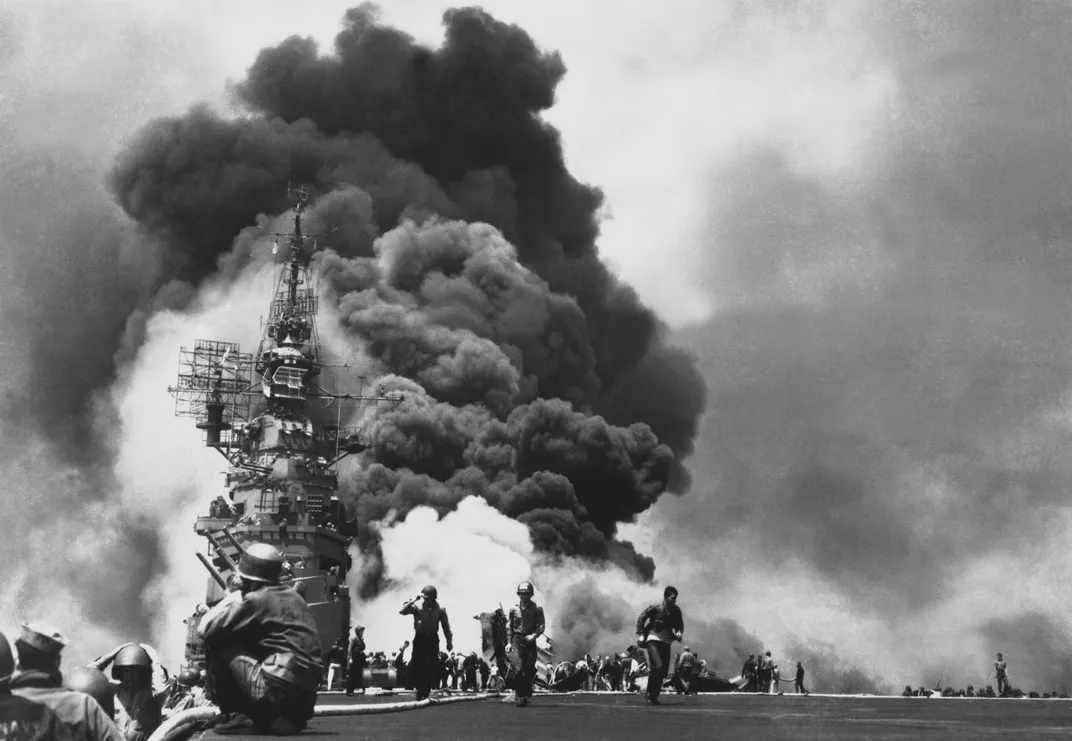
“The decision-makers were men who had grown accustomed to the necessity for cruel judgments. There was overwhelming technological momentum: a titanic effort has been made to create a weapon for which the allies saw themselves as competing with their foes,” he wrote. “Having devoted such resources to the bomb, an extraordinary initiative would have been needed from Truman to arrest its employment.”
**********
On July 25, a month after the end of combat operations on Okinawa, the Americans issued a demand of “unconditional surrender” or face “prompt and utter destruction.” No mention was made of the atomic bomb and no formal response came from Japan.
On August 6, the Enola Gay took off from the tiny island of Tinian with “Little Boy,” the first atomic weapon used in warfare. Colonel Paul Tibbets and his crew flew their modified B-29 Superfortress toward Hiroshima, an industrial hub important to the Japanese war effort. It was also home to 350,000 people.
At 8:15 a.m., the bomb was dropped from a height of 31,000 feet. The Enola Gay lurched upward as it released the 10,000-pound bomb. Forty-three seconds later, “Little Boy” detonated at 1,900 feet, totally destroying a four-square mile area of Hiroshima and killing anywhere from 90,000 to 140,000 people. Many bodies were vaporized by the blast.
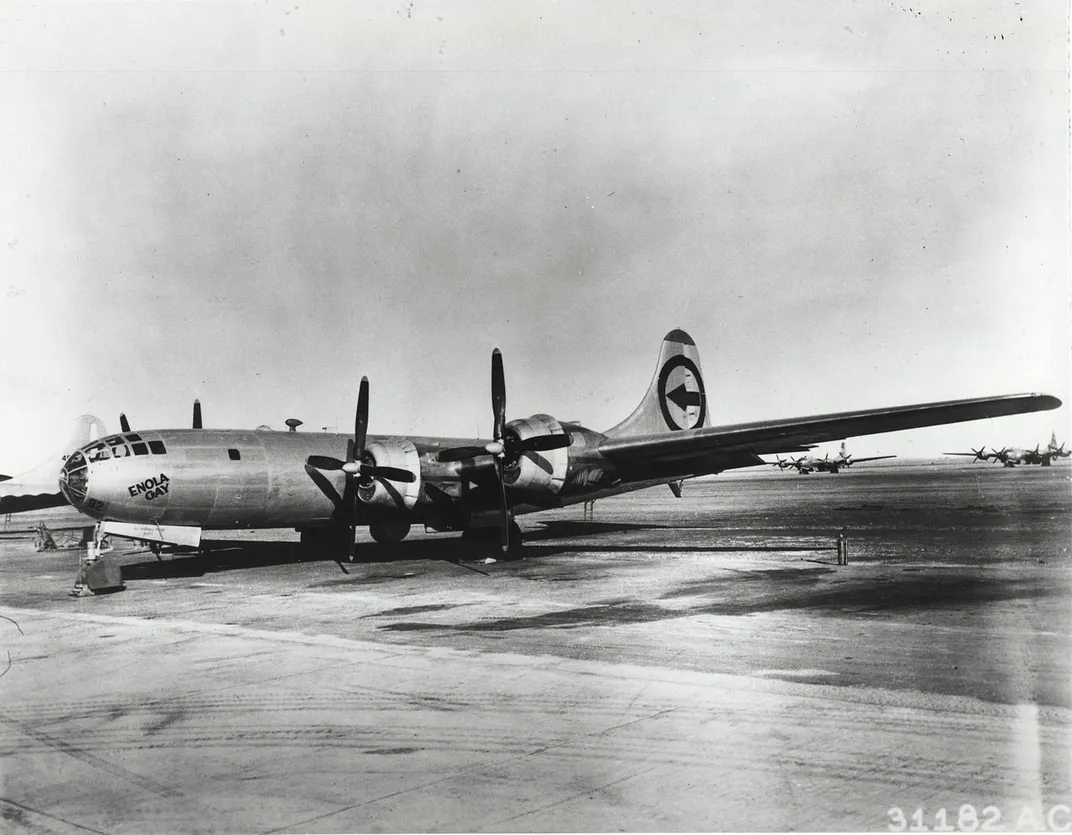
Tibbets later remembered the explosion as an “awful cloud…mushrooming, terrible and incredibly tall.” Copilot Captain Robert Lewis wrote in the flight log that everyone on the plane was “dumbstruck” by what they had just witnessed, adding, “I honestly have the feeling of groping for words to explain this or I might say, my God, what have we done?”
Following a second atomic bomb dropped on Nagasaki three days later, Japan announced its surrender on August 15. The American marines, soldiers, airmen and sailors preparing to invade Japan in just a few months could now return home. Few believed they would survive the attempt to conquer the island nation of 71 million people.
“The Joint Chiefs of Staff recognized that the American public was suffering from war fatigue,” Wheelan says. “They were losing interest. The European war was over and a lot of people were not very familiar with the war against Japan. When the Navy suggested they blockade the island and starve [the Japanese] into surrender, that was rejected. The American public did not have the patience for that. They wanted it over. It was invade or drop the bomb.”
The cost of war is never something that can be fully understood by the simple equation of who won and who lost. Saul David concludes Crucible of Hell with a passage from Jim Johnston, a Marine sergeant who was wounded on Okinawa. He reflected on returning to Nebraska after the war and how life at home was never the same again:
“In the dark corners of my mind, the only power under God that meant anything to me came out of the bore of a .30-06 – or if you were close enough, a .45. Those dark corners are still there.”
A Note to our Readers
Smithsonian magazine participates in affiliate link advertising programs. If you purchase an item through these links, we receive a commission.
/https://tf-cmsv2-smithsonianmag-media.s3.amazonaws.com/filer/0e/29/0e293e85-e4e3-456d-b9bd-8cab37d28383/battle-okinawa-mobile.jpg)
/https://tf-cmsv2-smithsonianmag-media.s3.amazonaws.com/filer/53/cf/53cf5fd1-0229-4435-b347-12521774d281/battle-okinawa-lead-longform.jpg)
/https://tf-cmsv2-smithsonianmag-media.s3.amazonaws.com/accounts/headshot/dave.png)
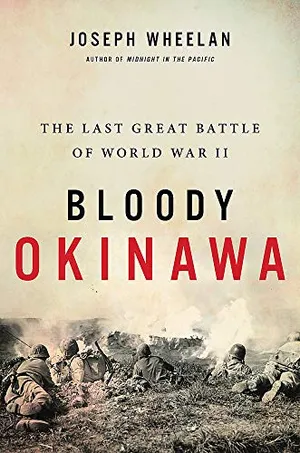
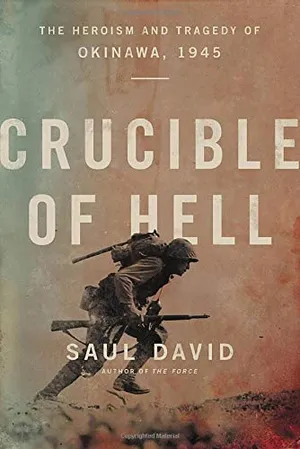
/https://tf-cmsv2-smithsonianmag-media.s3.amazonaws.com/accounts/headshot/dave.png)